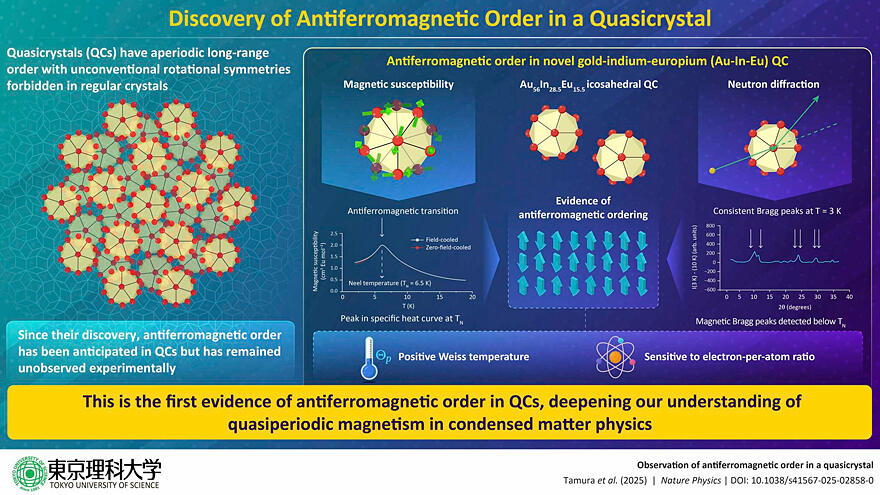A joint research group led by Professor Ryuji Tamura from the Faculty of Advanced Engineering at Tokyo University of Science, Graduate Student Takaki Abe from the Graduate School of Advanced Engineering at the same university, Professor Taku J. Sato from the Institute of Multidisciplinary Research for Advanced Materials at Tohoku University, and Professor Maxim Avdeev from the Australian Nuclear Science and Technology Organisation (ANSTO) has demonstrated that the icosahedral quasicrystal Au56In28.5Eu15.5 exhibits antiferromagnetism. Their findings were published in Nature Physics.

Provided by Tokyo University of Science
Quasicrystals are characterized by their orderly atomic arrangements without periodicity. Since the discovery of quasicrystals in 1984, there had been no reports of long-range magnetic order in quasicrystals. In 2021, the research group successfully synthesized ferromagnetic quasicrystals, which had a significant impact worldwide. However, the existence of antiferromagnetic quasicrystals remained theoretically uncertain and had been a long-standing mystery. The research group took on this half-century-old challenge to clarify the existence of antiferromagnetic quasicrystals.
In their research, powder X-ray analysis revealed that Au56In28.5Eu15.5 is a Tsai-type icosahedral quasicrystal. Magnetization measurements of Au56In28.5Eu15.5 showed a sharp cusp (maximum) at a Néel temperature of 6.5 K, and metamagnetic transitions were observed below the Néel temperature, suggesting an antiferromagnetic transition. Furthermore, powder neutron diffraction confirmed the presence of magnetic Bragg reflections below the Néel temperature, providing evidence for antiferromagnetic order. This significant achievement opens up a new research field of antiferromagnetic quasicrystals in condensed-matter physics.
Journal Information
Publication: Nature Physics
Title: Observation of antiferromagnetic order in a quasicrystal
DOI: 10.1038/s41567-025-02858-0
This article has been translated by JST with permission from The Science News Ltd. (https://sci-news.co.jp/). Unauthorized reproduction of the article and photographs is prohibited.




